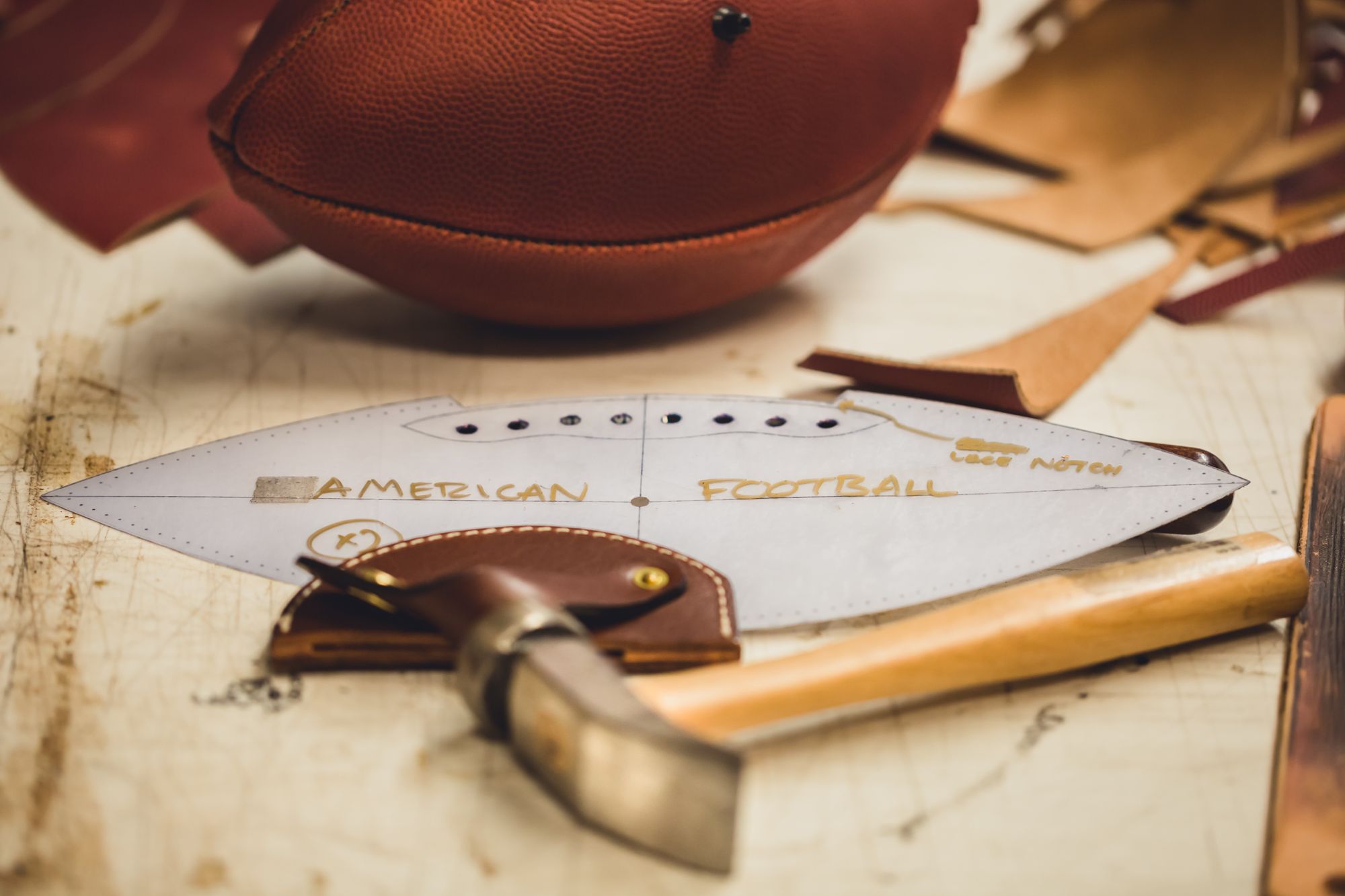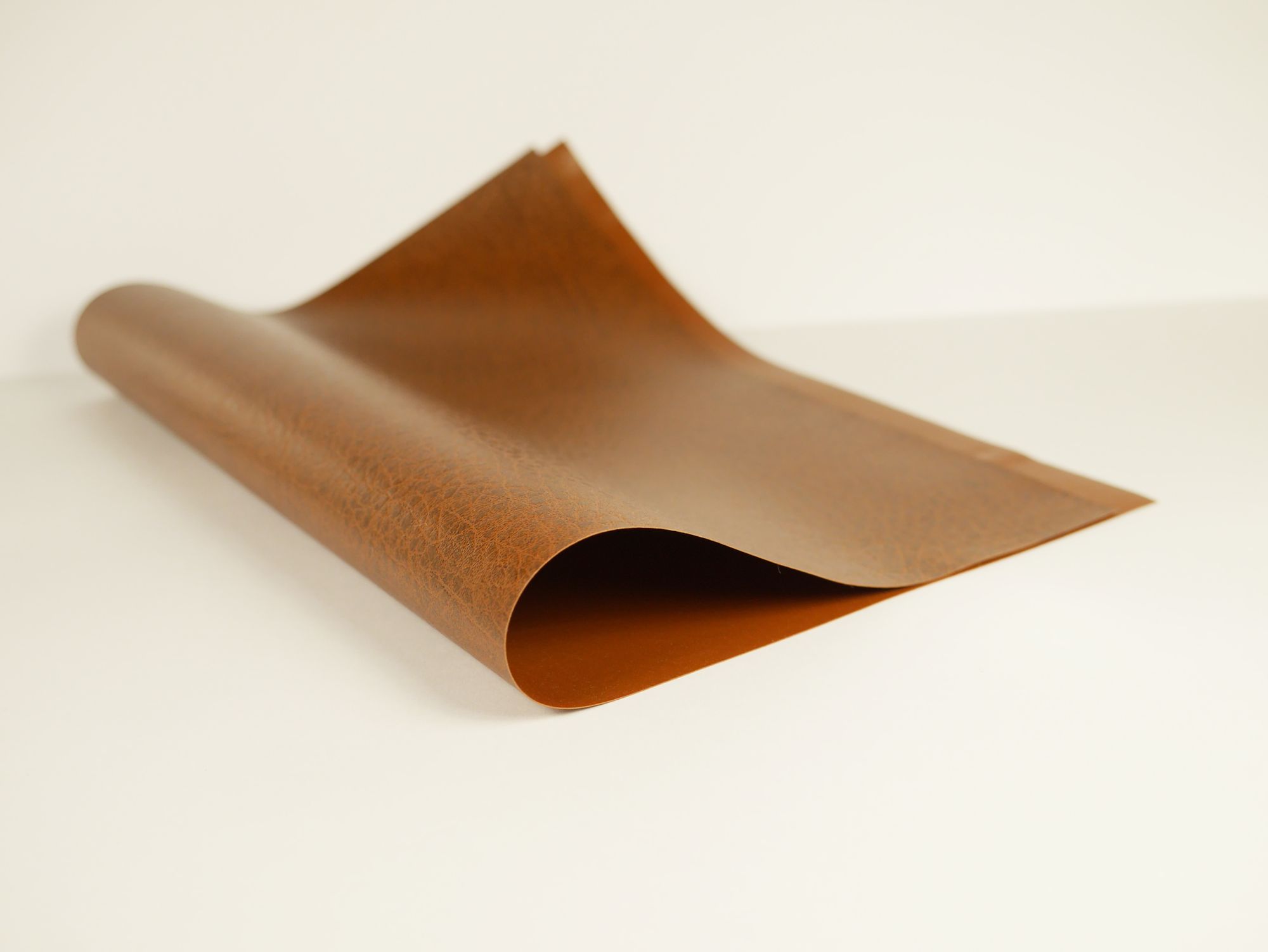- Introduction to Leather Manufacturing Regulations
- Current Regulatory Requirements
- Key Components of Leather Manufacturing Regulations
- Understanding the Leather Manufacturing Process
- Chemical Testing Requirements
- Animal Welfare Regulations
- Ethical Sourcing & Traceability
- Environmental Regulations
- Labeling & Packaging Requirements
- Quality Assurance & Compliance
- Understanding the Latest Regulations for Leather Manufacturing
Introduction to Leather Manufacturing Regulations
Introduction to Leather Manufacturing Regulations Leather manufacturing is a highly regulated industry. Regulations are in place to ensure the safety of workers, the environment, and the quality of the leather products being produced.
The regulations cover everything from the use of chemicals during the tanning process to the safety of the workplace and the disposal of by-products. Leather tanning is the process of treating hides and skins to make them more durable and suitable for use in manufacturing.
Tanning processes use a variety of chemicals, including chromium and other heavy metals, which need to be regulated in order to protect workers and the environment. Regulations dictate the use of Personal Protective Equipment (PPE) to protect workers from exposure to hazardous chemicals and set limits on the number of tanning chemicals that can be used.
When it comes to workplace safety, regulations require that manufacturers adhere to strict standards. These include requirements for proper ventilation, lighting, and fire protection, as well as safety protocols for working with machinery and the proper storage of materials.
In addition to environmental and workplace safety, regulations also exist to ensure the quality of the leather products being produced. These include specifications for the thickness and texture of the leather, as well as requirements for labeling and packaging. Leather manufacturing is a complex process and involves many regulations.
It's important for leather manufacturers to understand these regulations and ensure that their processes are compliant in order to protect workers, the environment, and the quality of their products.
Current Regulatory Requirements
Leather manufacturing is an important part of the global economy, as it supports many industries and provides a valuable resource for clothing, footwear, and other consumer goods.
As such, there is a need for comprehensive regulatory requirements to ensure that the manufacturing process is done safely and sustainably. The first regulatory requirement on leather manufacturing is that of the country in which the factory is located. In many countries, there are laws in place that regulate the emission of pollutants and other compounds, as well as the disposal of hazardous materials.
It is important that factories adhere to these laws, as failure to comply can lead to hefty fines or even closure of the facility. In addition, many countries have laws that regulate the use of animal hides in the production of leather, and this must be adhered to in order to maintain legal status.
In addition to country-specific regulations, there are a variety of international standards that also apply to leather manufacturing. The International Organization for Standardization (ISO) has created a number of standards for the industry, including ISO 1525, which sets forth requirements for the production of leather products.
Additionally, the World Trade Organization (WTO) has created the Agreement on the Technical Barriers to Trade, which is designed to ensure that leather products meet certain standards when being exported, imported, or traded between nations.
All factories that manufacture leather must also comply with the environmental regulations set forth by the Environmental Protection Agency (EPA). These regulations set forth standards for the emissions of volatile organic compounds, as well as for the disposal of hazardous materials.
It is important for manufacturers to understand and adhere to these regulations, as failure to do so can result in hefty fines or even closure of the facility. Finally, all leather manufacturers must ensure that they comply with the Occupational Safety and Health Administration (OSHA) regulations.
These regulations are designed to ensure that workers are provided with a safe and healthy work environment and that they are provided with the safety equipment as needed. It is important for leather manufacturers to understand and adhere to these regulations in order to ensure the safety of their employees.
In conclusion, there are a variety of regulatory requirements that leather manufacturers must adhere to in order to ensure the safety of their workers, the sustainability of the industry, and the protection of the environment. It is important for leather manufacturers to understand and adhere to these regulations in order to remain compliant and legally operating.
Key Components of Leather Manufacturing Regulations
Leather manufacturing regulations are essential for ensuring the safety of consumers and workers, as well as for preserving the quality of leather products. Leather regulations dictate the quality standards, processes, and safety measures that must be met in the production of leather goods.
In the United States, the most comprehensive leather regulations come from the Environmental Protection Agency (EPA). The EPA has established a number of standards for leather manufacturing processes, including the following:
1. The Clean Air Act:
This act sets limits on the amount of air pollutants that can be released from leather manufacturing processes. It also requires manufacturers to use the best available technology (BAT) to reduce emissions.
2. The Clean Water Act:
This act sets limits on the amount of pollutants that can be discharged into waterways. It requires leather manufacturers to use the best available technologies to reduce discharges.
3. The Resource Conservation and Recovery Act:
This act sets standards for the storage and disposal of leather manufacturing waste. It also requires manufacturers to minimize waste and use recycling whenever possible.
4. The Toxic Substances Control Act: This act sets limits on the amount of toxic substances that can be used and released from leather manufacturing processes. It also requires manufacturers to properly store, label, and transport hazardous materials.
5. The Occupational Safety and Health Act: This act sets standards for workplace safety and health. It requires leather manufacturers to provide workers with a safe working environment, and to follow procedures to prevent accidents and injuries.
These are just some of the key components of leather manufacturing regulations in the United States. It is important for leather manufacturers to be aware of, and comply with, all applicable regulations.
Failure to do so can result in serious penalties, including fines and even criminal prosecution. In addition to the regulations set by the EPA, many states, counties, and cities have their own regulations for leather manufacturing.
Manufacturers should be familiar with the regulations in their area, as they could be subject to more stringent rules than those of the EPA. Finally, leather manufacturers should be familiar with the standards and regulations set by the Leather Working Group (LWG).
This organization sets standards for the environmental and social performance of leather manufacturing processes. Manufacturers must meet these standards in order to be eligible for LWG certification.
By following all applicable regulations, leather manufacturers can ensure the safety of their workers and the quality of their products. This will help them to remain competitive in the leather industry, and to ensure the satisfaction of their customers.
Understanding the Leather Manufacturing Process
Leather manufacturing is a process that has been around for centuries, but it’s still undergoing changes to keep up with modern times. Understanding the leather manufacturing process can help you get a better idea of what goes into the production of leather goods, from the raw material to the finished product.
The process of leather manufacturing starts with the selection of raw hides. Different types of leather come from different animals, with cowhide being the most commonly used. The hides then go through a curing process, which involves salting, drying, and smoking to preserve the hide and make it ready for tanning.
Tanning is the process of adding oils and chemicals to the hide to make it more durable and flexible. Once the hide has been tanned, it is cut into various shapes and sizes, depending on the intended product.
It is then dyed to the desired color and if needed, it can be embossed with a design. After it has been dyed, the leather is then ready for sewing. Sewing machines are used to assemble the leather into a variety of products, such as wallets, bags, and clothing. The final step in leather manufacturing is finishing.
Finishing involves adding a protective coating to the leather, usually with wax or oil, to prevent it from becoming damaged or stained. This coating also helps the leather retain its color and shape over time.
Leather manufacturing is a complex process, but it’s one that’s been used for centuries to make beautiful and durable products. By understanding each step of the process, you can get a better understanding of the craftsmanship and skill that goes into creating leather goods.
Chemical Testing Requirements
Leather manufacturing is a complex process that involves many different steps, from tanning to dyeing and finishing. Each step requires careful attention to detail in order to ensure the highest quality product.
One of the most important aspects of leather manufacturing is chemical testing, as it is necessary to ensure that the leather is free of hazardous chemicals and pollutants. When it comes to chemical testing, there are several different types of tests that are used.
The most common types of tests used in leather manufacturing include physical testing, colorimetric testing, and spectroscopic testing. Physical testing is used to determine the physical properties of leather, such as thickness, weight, and flexibility.
Colorimetric testing is used to measure the color of the leather, and spectroscopic testing is used to identify the chemical composition of the leather. In addition to these tests, leather manufacturers must also ensure that their products are free of hazardous chemicals and pollutants.
This is done through a variety of tests, such as volatile organic compound (VOC) testing and heavy metal testing. VOC testing is used to detect the presence of volatile organic compounds, which are chemical compounds that are released into the air when leather is produced.
Heavy metal testing is used to determine the presence of heavy metals, such as lead, mercury, and cadmium, which can be hazardous if present in too high a concentration. The results of all of these tests are used to determine the safety and quality of the leather.
If any of the tests indicate that the leather contains hazardous chemicals or pollutants, manufacturers must take steps to mitigate the risk and ensure that their products are safe for use.
There are also a variety of other tests that can be used to test leather. These tests include tear strength testing, tensile strength testing, and accelerated aging testing. Tear strength testing is used to measure the strength of the leather when it is subjected to tearing forces, while tensile strength testing is used to measure how much force is needed to break the leather.
Accelerated aging testing is used to determine how the leather will hold up over time when exposed to heat, light, and extreme temperatures. Chemical testing is essential for ensuring that leather products meet the highest standards of quality and safety.
By conducting regular tests, manufacturers can ensure that their products are free of hazardous chemicals and pollutants and that they meet the highest standards of quality and safety.
Animal Welfare Regulations
Animal welfare regulations have become increasingly important in the leather manufacturing industry. Leather is made from tanned animal hide, and the treatment of animals for this process is an important ethical consideration.
Leather tanneries have been criticized for their treatment of animals, and in response, the leather industry has adopted animal welfare regulations to ensure that animals are treated humanely, and their skins are sourced responsibly.
The most important animal welfare regulations in the leather industry are the Five Freedoms, which were developed by the Farm Animal Welfare Council. The five freedoms are freedom from hunger and thirst, freedom from discomfort, freedom from pain, injury, and disease, freedom to express normal behavior, and freedom from fear and distress.
These five freedoms provide a framework for animal welfare regulations in the leather industry. The leather industry has also adopted a number of regulations and certification systems that ensure that animal welfare is taken into consideration.
For example, the Leather Working Group (LWG) is a global organization that assesses and audits tanneries based on their environmental and animal welfare policies. The LWG has developed a set of protocols that tanneries must follow in order to become certified.
These protocols include requirements for the humane handling of animals, the prevention of animal cruelty, the use of humane slaughtering practices, and the responsible sourcing of hides.
In addition to the LWG, the leather industry has also adopted the Responsible Down Standard (RDS). This standard is a global, independent certification system that assesses the animal welfare of down and feather products.
The RDS requires that all down and feather products are sourced from animals that are treated humanely and that the animals are not subjected to any unnecessary suffering or cruelty.
Finally, the leather industry has also developed a number of other regulations and standards that ensure that animals are treated humanely, and their skins are sourced responsibly.
For example, the Leather Standard for the Environment (LS4E) is a set of standards that are designed to minimize the environmental impacts of leather production while also ensuring that animal welfare is taken into consideration.
The LS4E includes requirements for the humane handling and slaughter of animals, as well as requirements for the responsible sourcing of hides. Animal welfare is an important ethical consideration in the leather industry.
In response, the leather industry has adopted a number of regulations and standards that ensure that animals are treated humanely, and their skins are sourced responsibly. These regulations and standards provide a framework for the industry to ensure that animals are not subjected to unnecessary suffering or cruelty and that their hides are sourced responsibly.
Ethical Sourcing & Traceability
As the leather industry is a global industry, it’s important for manufacturers to ensure that the leather they use is ethically sourced. Ethical sourcing and traceability in leather manufacturing is about understanding the origin of the leather and making sure it is sourced from suppliers who abide by ethical and responsible practices.
Traceability in leather manufacturing is key to understanding the product’s origin, the materials used and the processes used to create the leather. It ensures that the leather is being sourced and produced in a way that is safe, humane and sustainable.
Traceability also allows leather manufacturers to ensure that the leather they are using is of a high quality and comes from reliable and ethical sources. When sourcing leather, manufacturers should consider the following:
The source of the leather – Is the leather coming from a reliable source? • The animal welfare standards – Have the animals been treated humanely? Are they being given proper care?
The tanning process – Has the tanning process been done responsibly and without the use of harmful chemicals?
The environmental impact – Has the leather been produced in a way that is mindful of the environment? Manufacturers should also ensure that the leather is traceable from the source to the finished product.
This means that the leather must be traceable from the source of the raw material, through the tanning process, to the finished product. Traceability helps manufacturers to ensure that the leather is of high quality and has been sourced responsibly and ethically.
Traceability also ensures that leather manufacturers are able to track the materials used and the processes employed in the production of the leather. This helps to ensure that the leather is of high quality and can be traced back to its source.
Ethical sourcing and traceability in leather manufacturing are essential to ensure that the leather is sourced responsibly and ethically and is of high quality. Manufacturers should take the necessary steps to ensure that the leather they are using is being sourced in an ethical and responsible manner. This will help to ensure that the leather is produced in a way that is safe, humane, and sustainable.
Environmental Regulations
Leather manufacturing is a centuries-old process with a long, often troubling, history of environmental pollution. The process of tanning and dyeing leather requires the use of numerous chemicals, and when those chemicals aren’t properly managed, they can pollute the air, water, and soil.
Thankfully, governments around the world have stepped up to create environmental regulations that are designed to protect our planet from the damaging effects of leather manufacturing. In the United States, the Environmental Protection Agency (EPA) is responsible for controlling and monitoring pollution from leather tanneries.
The EPA has set standards for air emissions, water discharges, and hazardous waste management. These standards must be met by all tanneries and leather factories in order to remain in operation.
The EPA also requires tanneries to install and use pollution control equipment, such as scrubbers and filters, to reduce the number of hazardous materials released into the environment.
In addition to the EPA’s regulations, the US Department of Labor’s Occupational Safety and Health Administration (OSHA) has put in place regulations to protect workers who are exposed to hazardous chemicals and materials in the tanning and dyeing process.
OSHA requires tanneries to provide employees with protective gear, such as gloves and masks, and to properly train them on the safe use of chemicals. Other countries have also implemented regulations to protect their environment from the damaging effects of leather manufacturing.
The European Union has put in place a series of laws and regulations that require leather manufacturers to adhere to strict guidelines when it comes to air and water emissions, waste management, and worker safety.
The EU also requires tanneries to use only environmentally friendly chemicals and processes, as well as to dispose of any hazardous waste properly. Overall, the regulations that have been put in place by governments around the world have had a positive impact on the environment.
By requiring tanneries to adhere to strict standards, we can ensure that the leather manufacturing industry is not causing unnecessary harm to our planet. As consumers, we can also do our part by choosing to buy leather products from companies that take environmental protection seriously.
Labeling & Packaging Requirements
Labeling and packaging are essential components of leather manufacturing. Proper labeling and packaging of leather products ensure that the product is safe, attractive, and accurately represented.
When developing a labeling and packaging plan for your leather products, it is important to consider the needs of the customer, the legal requirements of the product, and the protection of the product. The first step in labeling and packaging your leather products is to determine the legal requirements for the product.
Depending on the type of leather product, there may be different labeling and packaging requirements. For example, some leather products must contain a label that states the type of leather used in the product.
Additionally, some leather products require a safety label that warns potential customers of any potential hazards associated with the product. Once the legal requirements have been established, the next step is to determine the protection needed for the leather product.
Leather products are delicate and require special packaging to ensure that they are protected during shipping and handling. Different types of leather require different types of packaging, such as bubble wrap, tissue paper, and specialty boxes.
Additionally, the packaging should be designed to ensure that the product is safe from moisture, dust, and other environmental elements. The last step in labeling and packaging your leather products is to determine what type of labeling will be used. Labeling should provide information such as the product name, size, color, care instructions, and a description of the product.
It is also important to consider the customer’s needs when labeling and packaging the product. For example, it is important to include information about the leather used in the product, as well as information about the manufacturer.
Additionally, the labels should be designed to be eye-catching and attractive. Labeling and packaging are essential components of leather manufacturing. Proper labeling and packaging will ensure that the product is safe, attractive, and accurately represented.
Additionally, proper labeling and packaging will help to protect the product during shipping and handling. By following the steps outlined above, you can create an effective labeling and packaging plan for your leather products.
Quality Assurance & Compliance
Leather manufacturing is a complex process involving several steps and a variety of materials. Quality assurance and compliance with industry standards are key to producing a product that meets customer expectations and legal requirements.
Quality assurance and compliance must be taken into consideration throughout the entire leather manufacturing process, from the sourcing of raw materials to the finished product. At the beginning of the process, it is important to select a reliable supplier of raw materials.
The materials used in leather manufacturing should be of high quality and meet all applicable standards. Leather should be inspected for imperfections, tears, or other damage before it is cut and processed.
The tanning process should also be carefully monitored to ensure that the appropriate chemicals and techniques are used. Once the leather is cut, the pieces must be inspected for accuracy.
If the pieces are not cut properly, they may not fit together as intended and may not be able to withstand the stress of use. The pieces should also be inspected for any defects or damage.
The pieces must then be stitched together to form the finished product. All stitching should be inspected to make sure that it is tight and secure. All edges should be sealed to prevent fraying and ensure a professional finish.
The finished product must also be inspected for any imperfections or defects. The product should be tested for durability, comfort, and safety. If any defects are found, the product should be rejected and reworked.
Finally, all records of the process should be kept, including all rejections, reworks, and other quality control information. This data should be reviewed regularly to track trends and identify areas of the process that need improvement.
Quality assurance and compliance are essential for leather manufacturing. Quality materials and processes must be used throughout the entire process, from raw material sourcing to the finished product.
All materials, processes, and products should be inspected for accuracy, defects, and safety. Records should be kept and analyzed to identify any areas of improvement. By following these steps, manufacturers can ensure that their leather products meet the highest standards of quality assurance and compliance.
Understanding the Latest Regulations for Leather Manufacturing
As the leather industry continues to expand, it is important to stay abreast of the latest regulations in order to protect both workers and the environment. Leather manufacturing is a complex process that involves multiple steps and numerous chemicals, and it is important to remain compliant with all applicable safety and environmental regulations.
In the leather manufacturing process, leather is typically produced in three stages: tanning, finishing, and dyeing. Each of these steps requires careful monitoring and compliance with the latest regulations.
The tanning process is the first step and involves the use of various chemicals to remove the hide from the animal and preserve the leather. Tanning chemicals must be carefully controlled and monitored to ensure that they are not released into the environment.
In the finishing stages of leather production, various coatings and finishes are applied to the leather. These coatings can contain hazardous chemicals and must be carefully monitored.
The leather is then usually dyed, which also requires the use of chemicals. The dyes used must be carefully monitored as they are often hazardous to the environment. The latest regulations regarding leather manufacturing are designed to protect both workers and the environment.
These regulations include workplace safety guidelines, limits on the use of hazardous materials, and environmental protection laws. It is important for manufacturers to stay up to date on the latest regulations and ensure that they are compliant.
Leather manufacturing is a complex process that requires careful compliance with the latest regulations. It is important to stay abreast of the latest regulations in order to protect both workers and the environment. By understanding the latest regulations and remaining compliant, manufacturers can ensure the highest level of safety and environmental protection.
How Can Deskera Assist You?
As a manufacturer, you must keep track of your inventory stock. The condition of your inventory has a direct impact on production planning. It also has a direct impact on people and machinery use and capacity utilization.

Deskera MRP is the one tool that lets you do all of the above. With Deskera, you can:
- Control production schedules
- Compile a Bill of Materials
- Produce thorough reports
- Make your dashboard
Deskera ERP is a complete solution that allows you to manage suppliers and track supply chain activity in real-time. It also allows you to streamline a range of other company functions.
Deskera Books allows you to manage your accounts and finances better. It helps maintain good accounting standards by automating billing, invoicing, and payment processing tasks.
Deskera CRM is a powerful tool that organizes your sales and helps you close deals rapidly. It enables you to perform crucial tasks like lead generation via email and gives you a comprehensive view of your sales funnel.
Deskera People is a straightforward application for centralizing your human resource management activities. Not only does the technology expedite payroll processing, but it also helps you to handle all other operations such as overtime, benefits, bonuses, training programs, and much more.
Key Takeaways:
- The leather manufacturing industry is highly competitive, with many players vying for a share of the market.
- Another trend that is likely to shape the future of the leather industry is the growing demand for personalized and customized products.
- Emerging markets such as China, India, and Brazil are becoming major players in the leather industry.
- Some of the main environmental concerns associated with leather production include the use of hazardous chemicals, high water usage, air and water pollution, and deforestation.
- The future of the leather manufacturing industry is likely to be shaped by a range of factors, including changing consumer preferences, technological advancements, and environmental concerns.
Related Articles:












